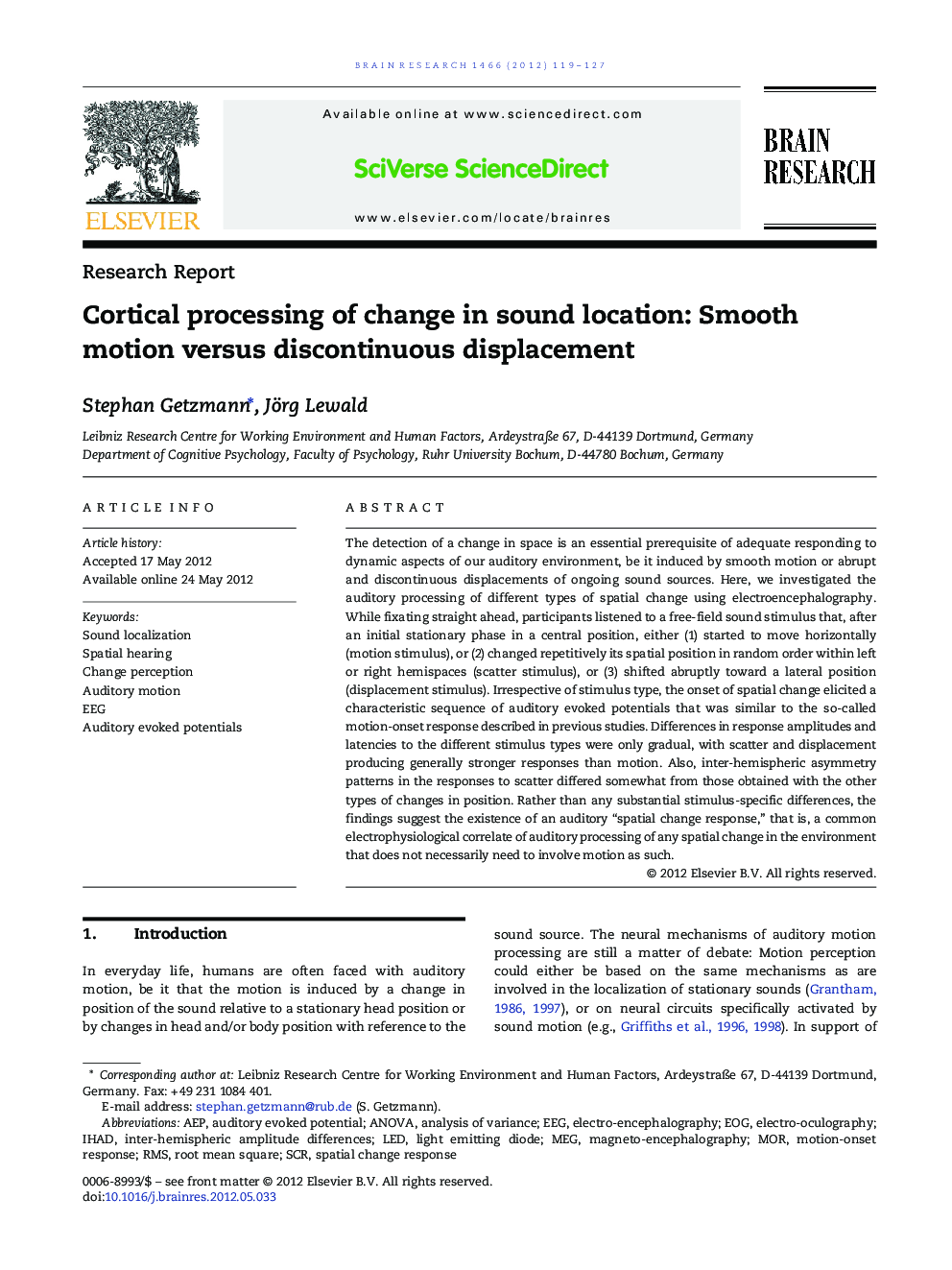| Article ID | Journal | Published Year | Pages | File Type |
|---|---|---|---|---|
| 6264273 | Brain Research | 2012 | 9 Pages |
The detection of a change in space is an essential prerequisite of adequate responding to dynamic aspects of our auditory environment, be it induced by smooth motion or abrupt and discontinuous displacements of ongoing sound sources. Here, we investigated the auditory processing of different types of spatial change using electroencephalography. While fixating straight ahead, participants listened to a free-field sound stimulus that, after an initial stationary phase in a central position, either (1) started to move horizontally (motion stimulus), or (2) changed repetitively its spatial position in random order within left or right hemispaces (scatter stimulus), or (3) shifted abruptly toward a lateral position (displacement stimulus). Irrespective of stimulus type, the onset of spatial change elicited a characteristic sequence of auditory evoked potentials that was similar to the so-called motion-onset response described in previous studies. Differences in response amplitudes and latencies to the different stimulus types were only gradual, with scatter and displacement producing generally stronger responses than motion. Also, inter-hemispheric asymmetry patterns in the responses to scatter differed somewhat from those obtained with the other types of changes in position. Rather than any substantial stimulus-specific differences, the findings suggest the existence of an auditory “spatial change response,” that is, a common electrophysiological correlate of auditory processing of any spatial change in the environment that does not necessarily need to involve motion as such.
Graphical abstractDownload high-res image (149KB)Download full-size imageHighlights⺠Auditory processing of different types of spatial change was investigated by EEG. ⺠The change in spatial position elicited characteristic auditory evoked potentials. ⺠Responses to all stimuli were similar to the so-called “motion-onset response”. ⺠Responses appeared to be change-specific rather than genuine motion specific.
